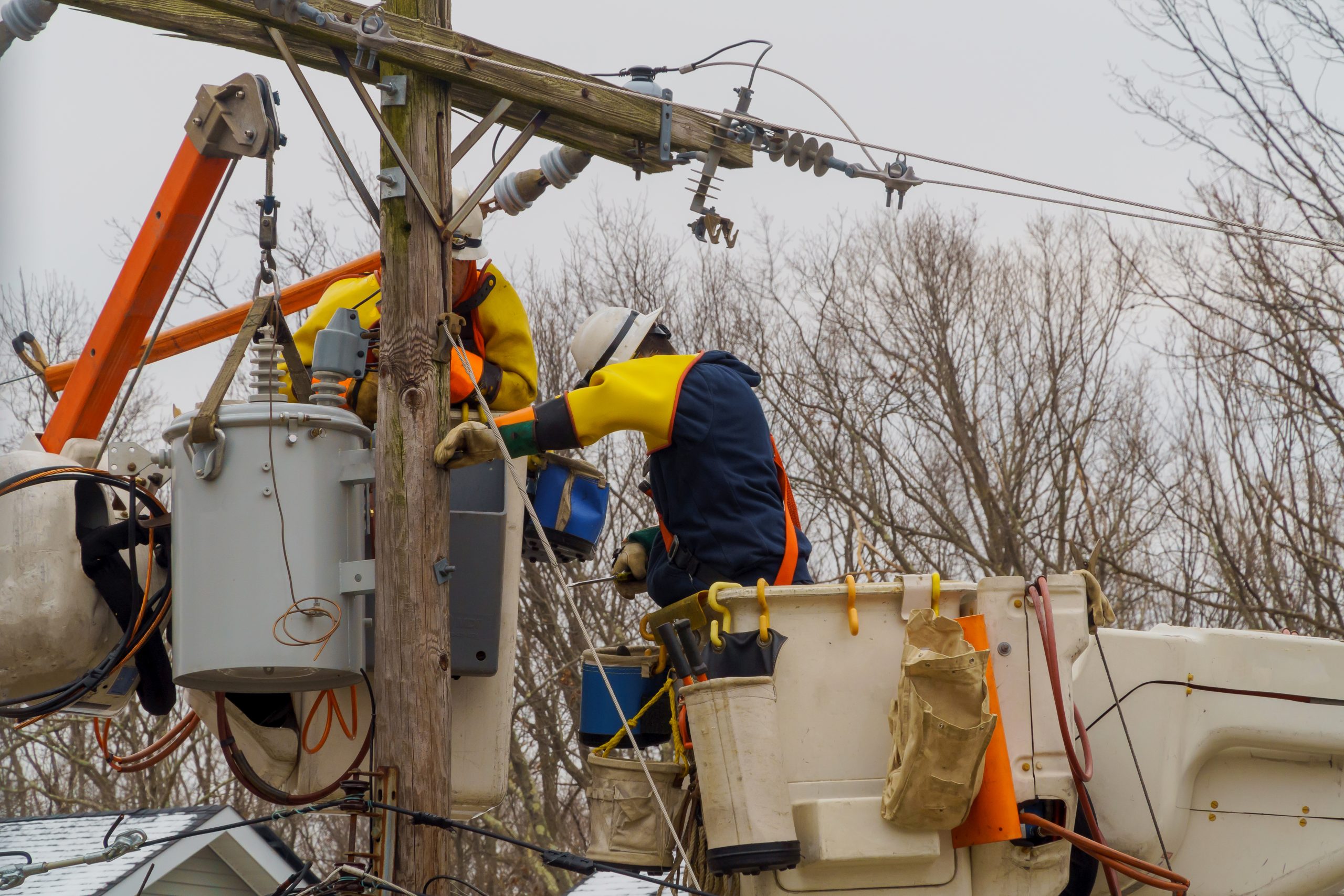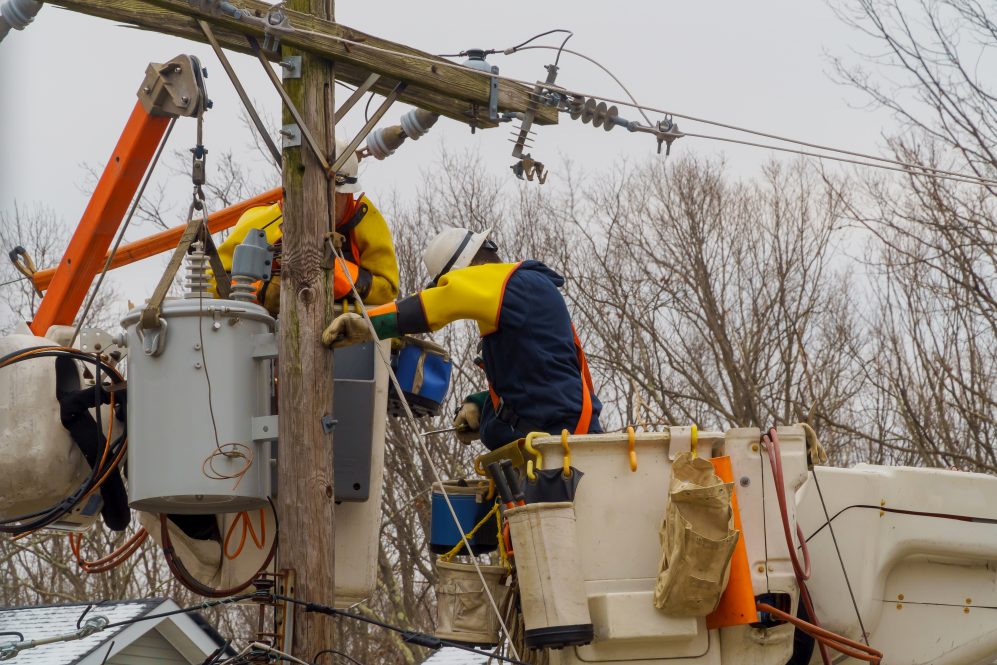
Weather forecasting is not easy. The truth is that predicting future weather conditions over broad, or even narrow, swathes of Earth’s surface comes down to complex microphysical processes, and as College of Engineering Associate Professor and UConn Atmospheric and Air Quality Modeling Group Leader Marina Astitha puts it, nature is chaotic.
Astitha and her research group are at the forefront of exploring ways to improve weather prediction using AI and machine learning to enhance existing physics-based models. They developed new methods for the prediction of snowfall accumulation and wind gusts associated with extreme weather events in three recent papers in the Journal of Hydrology, Artificial Intelligence for the Earth Systems, and another in the Journal of Hydrology.
Postdoctoral researcher Ummul Khaira Ph.D. ’24 led the snowfall prediction work during her time as a Ph.D student. Ph.D candidate Israt Jahan is passionate about building models that improve predictions of damaging wind gusts from storms.
The researchers met with UConn Today to discuss the importance and everyday applications of enhanced forecasting capabilities using these new technologies.
Are there forecasting challenges that are unique to the Northeast?
Astitha: There are characteristics about the Northeast that make it particularly difficult to make weather predictions for. This is especially true for winter weather because we have Nor'easters that can come from either the center of the country or from the Gulf. Some move slowly, and they are highly predictable. Some can be what we call a bomb cyclone, where they rush up here and dump a lot of snow in a small amount of time.
For weather forecasting, we traditionally use numerical weather prediction models that are based on physics principles and have seen large improvements over the last 20-30 years. We have been running our own weather forecasting system at UConn since 2014, based on physical models. However, numerical weather prediction comes with its own challenges due to uncertainty in parameterizations that are necessary when no physical laws are known for a specific process.
For windstorms, wind gusts specifically are a complicated variable. It's wind, but the way we observe it and the way we model it is different.
Can you explain more about the physics used in numerical weather prediction models?
Astitha: Precipitation is a microscale process. As air rises and cools, clouds form, and within those clouds, tiny cloud droplets develop through complex microphysical interactions. Over time, some of these droplets grow large enough to become raindrops or snowflakes. Once they reach a critical size, gravity causes them to fall to the ground as precipitation. This entire process is governed by microphysical processes.
We try to predict such microphysical processes embedded in numerical weather models by solving many equations and parameterizations. These models describe our atmosphere as a 3D grid, dividing it into discrete boxes where we solve equations based on first principles (motion, thermodynamics, and more). This approach poses a major challenge: even with increased resolution, each grid cell often represents a large volume of air, typically one to four square kilometers. Despite efforts to refine the grid, these cells still encompass vast areas, limiting the model’s ability to resolve smaller-scale processes.
Numerical prediction is what got me here. 20 years ago, I could run a code to numerically solve physics equations of the atmosphere, and then I could tell approximately what the weather would be like the next day. That, to me, was mind-blowing!
Once you run one deterministic model, you get one answer that the temperature is going to be, say 75 degrees tomorrow in Storrs. That's one potential realization of the future. Models like that are not capable of giving us an exact answer, because nature is chaotic. I’ve always had the mindset of looking at multiple models to have an idea of that uncertainty and variability, and if 10 different realizations give you 74, 75, or 76 degrees, you know you're close.
Khaira: Few things are more humbling than a snowfall that defies prediction. My work lies in embracing that uncertainty in the chaos and building models not to promise perfection, but to offer communities and decision makers a clearer window into what might lie ahead.
How is your recent research helping with the challenges of numerical weather prediction?
Astitha: Imagine a Nor'easter coming our way during wintertime; they come with a lot of snow and wind. We work with the Eversource Energy Center and we're interested not only on the scientific advancement, but also the impact and accuracy in predicting when and where that storm is going to happen in Connecticut. Weather prediction accuracy influences the estimation of impacts; for example, power outages. We might underestimate or overestimate the impact by a lot. That makes winter storms of particular interest because of the impact they have on our society, our transportation networks, and electrical power distribution networks.
Five years ago, we decided to test whether a machine learning framework could help with wind gust and snowfall prediction. It comes with its own challenges and uncertainties, but we quickly saw that there is a lot of promise for these tools to correct errors and do better than what numerical weather prediction can do and at a fraction of the time. Machine learning and AI can help improve the analysis of wind gusts and snowfall, but these systems are not perfect either. We want to be able to better predict storms over Connecticut and the Northeast US, which is why we started this exploration with ML/AI, even though most of the research out there about how to implement AI in weather prediction is either at the global scale or much coarser resolution, but we're getting there.
Can you talk about the everyday impact of the research?
Astitha: An example is when the trees are full of leaves like they are in late spring and summer, and a storm comes in with a lot of rain and intense wind. Whole trees can come down and topple the power lines, which causes many disruptions around the state.
Our close collaboration with the Eversource Energy Center involves our immediate collaborators taking this weather prediction information and operationally predicting power outages for Connecticut and other service territories. That information can go to the utility managers, so they can prepare two to three days in advance, indicating a direct link from science and engineering to the application and to the manager.
I understand people’s frustrations and the need for answers about weather forecasts and impacts of storms. You want to know if your family is going to be safe and if you should or should not be out during particular times of the day. We're doing this research to improve the reliability and accuracy of weather forecasting, so communities and stakeholders are aware of what's happening when the storm hits their area and can take appropriate actions.
Jahan: It’s incredibly rewarding to know that my work has the potential to improve early warnings and give communities more time to prepare. By combining AI and uncertainty analysis, we’re not just making gust predictions more accurate - we are helping decision-makers plan with greater confidence.



